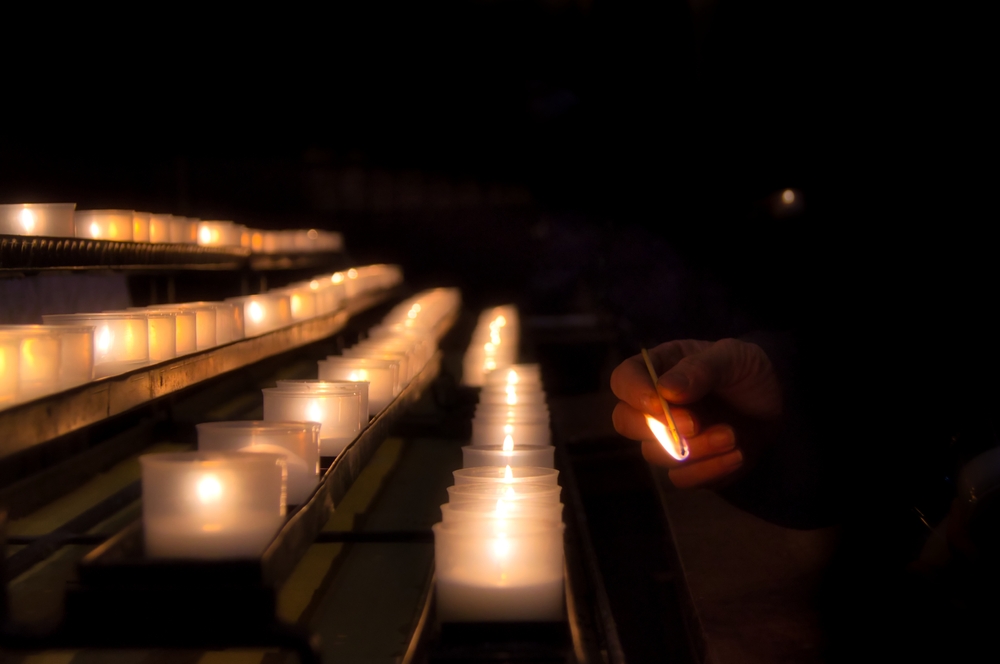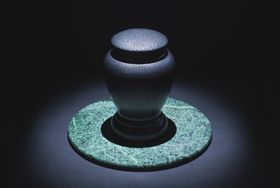A Guide to Funeral Wakes: What Are They?
Published May 24, 2022

There are many different ways to honor your dearly departed loved one, one of them being a wake. Originally, the word "wake" meant "watch" or "vigil," and wakes began as a way to watch over those that passed in the time between their death and burial. This service used to take place in private houses, but nowadays, it is more common for them to be held at a funeral home.
A wake is a lot less formal than a funeral. A funeral follows a particular order, while a wake is more casual and focuses on the mourners coming to remember the life of the person who died. Wakes traditionally take place a day or even several days before a funeral, but modern wakes can also occur right before the funeral, on the same day.
What Happens at a Wake?
The casket or urn will be on display at a wake, and family and friends will take a private moment to say a few words to the deceased. When approaching the urn or casket, some people might feel the need to kneel or bow their heads and pray, but it is also perfectly acceptable to walk by silently and pay your respects. Friends and family share memories and exchange fond stories about the deceased. It is also a time to pay condolences to the family and celebrate the life of the person who died. Some families may choose an event for the mourners to participate in, like planting a memorial tree or releasing lantern lights. Ultimately, what takes place at a funeral wake depends on the different purposes of the funeral service.
What to Say at a Wake
It can be tricky to know what to say at a funeral when offering your condolences to the grieving family. The overall mood of the wake should guide your choice of words to a certain extent. If you attend a wake where the family waits in the receiving line on the other side of the casket or urn to receive your condolences, wait to go through the receiving line and offer brief but sincere sympathies. For example, you could say, “I am so sorry for your loss. Jennifer was such a beautiful and special soul. She was one of the most inspiring people I’ve ever had the pleasure of knowing.”
If there is no receiving line, you can take a little more time talking to the family members and offering support to grieving loved ones. For instance, you can tell them about the good work the deceased did for the community, how they were a great friend, or how they always lifted the mood in the office. You can also share some humorous stories about them—but don’t prepare an entire stand-up comedy routine, as humor should not be taken too far.
Proper Funeral Wake Etiquette
You may be wondering what you need to know when visiting a funeral home and how to behave at a funeral wake, but it is generally the same as how to behave at a typical funeral service. Here are a few pointers for proper funeral wake etiquette:
- Dress code Dressing for a funeral and a wake is much the same, so choose the conservative attire you would wear to a business meeting or church service. Avoid very informal clothing, that is too tight or reveals too much skin. Unless otherwise specified by the family, assume that you need to wear black or dark, muted clothing. You want to dress appropriately and respectfully.
- Attending the wake Wakes follow similar rules to viewings and visitations and are generally open to the public if held at a funeral home. If you hear about the wake through an online announcement or obituary, it is safe to assume that anyone who knew the deceased is welcome. It may be a bit trickier if the wake is held at a private house. If you see mention of a wake through a Facebook post or obituary, it doesn’t necessarily mean an invitation, and it’s best not to go without a direct invitation when the wake is at home. If you are unsure, reach out to the family members.
- Duration The amount of time you spend at a wake depends on the location and how close you were to the deceased’s family. Wakes don’t have a set agenda, so if you are attending the funeral afterward, you can arrive at the wake at any time. It is acceptable to make a brief appearance if you just want to offer your condolences and drop off food or flowers if the wake is at a house, but you can also stay longer.
- No photos or videos Grieving is a personal experience, and posting photos or videos from the wake is inappropriate unless it is initiated by one of the family members of the person who passed. Photos and videos may make mourners feel uncomfortable, so focus on being present in the moment and offering your support.
Should You Bring Something to a Wake?
If the wake is at a funeral home, send flowers ahead of time so that the funeral staff can put them in the right location. Give some thought to the flowers you choose, as flowers have different meanings and connotations. To avoid added stress on the family, sympathy cards or other sympathy gifts like snack baskets are also best sent to the family another time and not brought to the funeral home. If the wake is at an individual's house, you can get flowers suitable for the home. However, practical gifts are often valued more than flowers, so you are welcome to take fruit baskets, casseroles, baked dishes, or sandwiches, so the family doesn’t need to worry about food at a later stage. Cards are also a nice gift to bring to a wake, especially if you write a heartfelt message.
Take a look at this article for more information about what to bring when you are preparing for the funeral.
A Time of Upliftment
A wake is all about paying respects to the deceased's family and, of course, saying a few words to the dearly departed. Wakes focus on uplifting and supporting the family through happy and positive messages and stories. It is a time to celebrate the person who has passed and be a reminder for us to celebrate life every day.





